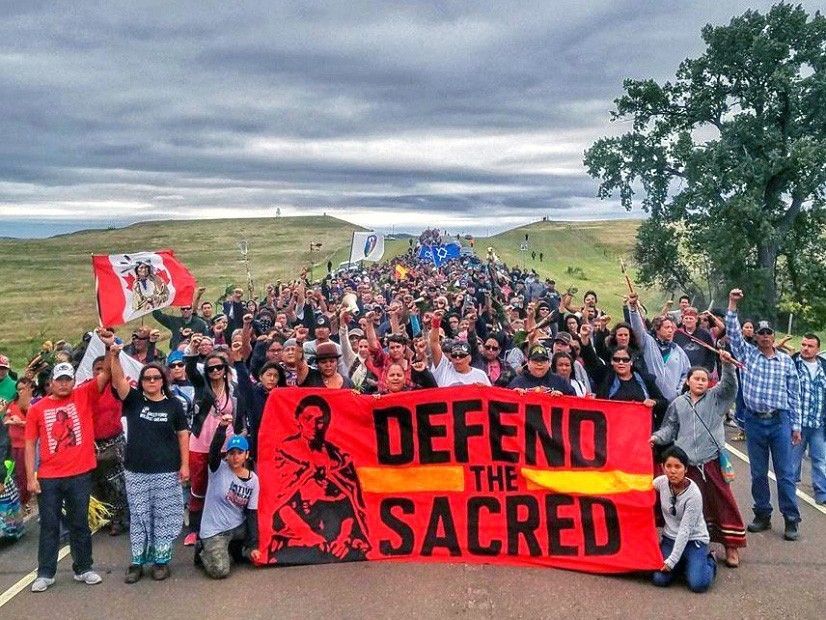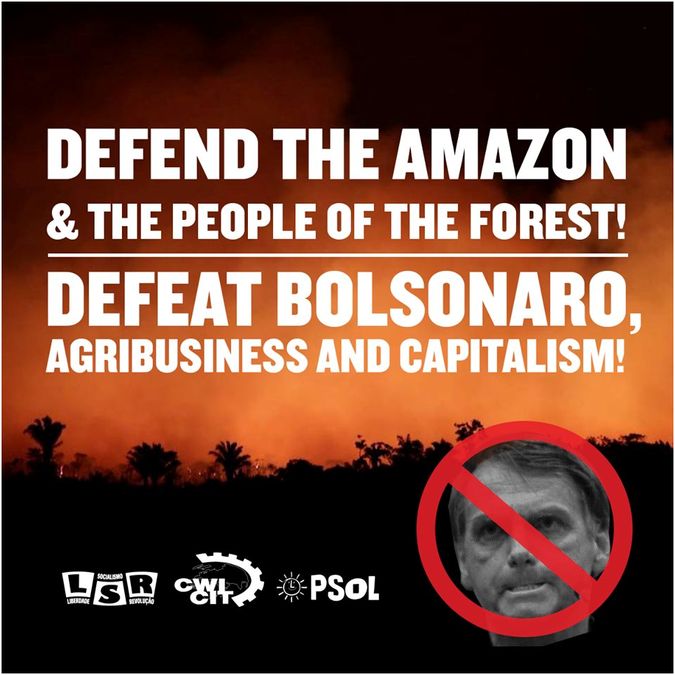Chris Stewart is a member of the Socialist Party (ISA in Ireland).
A new book by Japanese Marxist Kohei Saito has been an unlikely bestseller in Japan, selling more than half a million copies since its 2020 release. Saito’s unambiguous message that capitalism is to blame for the environmental crisis and that we must overthrow it to build a more sustainable world clearly caught the imagination of Japan’s youth, leading the way in a revival of Marxist literature in the country.
In Marx in the Anthropocene: Towards the Idea of Degrowth Communism, Saito analyses Marx’s key writings on capitalism’s relationship with the natural world and uses them as a framework for understanding the ecological crisis in the 21st century. Building on his previous book, Karl Marx’s Ecosocialism: Capital, Nature, and the Unfinished Critique of Political Economy (2017), he traces the development of Marx’s theory of capitalism’s ‘metabolic rift’ with nature.
Historical development of capitalism
In recent years, “eco-Marxist” writers like Saito, John Bellamy Foster, Paul Burkett and Brett Clark have revived Marx’s ecological critique of capitalism, which was largely lost throughout the 20th century. They have convincingly argued against the view of Marx as a “Promethean” who uncritically praised capitalism’s technological domination of nature.
Accusations of Marx’s “prometheanism” are often based on Marx’s early writings, such as The Communist Manifesto of 1848, in which Marx referred to capitalism’s “subjugation of nature to man” (p. 178). Marx was witness to the emergence of industrial capitalism in the 19th century and noted how it spurred revolutions in science, new technologies and industrial methods of production that were transforming human society, facilitating a huge increase in the exploitation of human labour and the extraction of natural resources.
Marx’s great insight was that capitalism was based on a fundamental conflict between the working class — who are forced to sell their labour to survive — and the property-owning capitalist class. Under this system, he noted, workers face an intense alienation from their own labour as well as from the natural conditions of their own existence, which are increasingly commodified in capitalism’s pursuit of profit.
The Manifesto, written as a call to arms to workers as revolution spread across Europe, “seethed with revolutionary optimism” and reflected Marx and Engels’s conviction that “capitalism would soon be transcended through a socialist revolution triggered by a severe economic crisis”. When these revolutions ended in defeat and capitalism was revived, Marx sought to gain a deeper understanding of the contradictions at the heart of the capitalist system so as to better understand the system’s workings, its dynamism and destructiveness.
Capitalism’s unsustainability
Saito shows that human society’s relationship with the rest of the natural world was at the heart of Marx’s materialist worldview and that capitalism’s predatory relationship with nature was a key part of his criticism of the system. As well as a system that produces profit from the exploitation of workers, Marx saw capitalism as a system of “robbery” based on the expropriation of nature and the plunder of colonies.
Saito argues that later in life Marx emphasised how “sustainable development of the productive forces is not possible under capitalism because it only reinforces intensive and extensive squandering and robbery of human and nature for the sake of short-term profit and endless capital accumulation, creating more complicated and extensive ecological issues” (p. 181).
Quoting at length from a collection of unpublished notes by Marx and Engels (which he is working on as one of the editors of the Marx-Engels-Gesamtausgabe (MEGA) collection), he shows that Marx examined aspects of ecological destruction closely related to climate change today: “the exhaustion of natural resources (soil nutrients, fossil fuel and woods) as well as the extinction of species due to the capitalist system of industrial production” (p. 4).
The metabolic rift
In particular, Marx’s dialectical understanding of human society as part of a ‘metabolic interaction’ with the rest of nature is crucial to understanding the scale of capitalism’s ecological crisis today.
Marx’s theory of value under capitalism holds that the capitalist market sees nature as a “free gift” to be exploited and polluted at will. As such, environmental costs generated by capitalist production are “externalized” meaning the capitalist does not have to bear them — the rest of us do. Marx argued that this meant capitalism would inevitably degrade the inherent value of the land, oceans, forests and atmosphere (which Marx included in his definition of “natural wealth”) for humans and all other living beings.
Flowing from this, Marx argued that capitalism’s endless drive for profit would mean expansion through relentless material extraction and pollution which would inevitably provoke a “metabolic rift” in the natural cycles that humanity depends on, leading to crisis.
The key example used by Marx was the depletion of the soil’s nutrients due to the intense exploitation of capitalist agriculture, but modern eco-Marxists have extended the concept to pollution of the atmosphere, ocean acidification and the disruption of the water cycle resulting from capitalist production.
Part of this metabolic rift for Marx was the divide between ‘town and country’ that was growing in his day. Capitalism’s expansion meant urban centres were becoming highly populated with a growing working class, while natural resources in the countryside were increasingly being hyper-exploited. This divide has increased massively in recent decades, with market-driven dispossession of poor peasants around the world leading to a boom in ever-expanding city slums while whole regions of the planet have become areas of extraction for mining companies, agribusiness and the fossil fuel industry.
Saito connects this to ‘ecological imperialism’, where resource exhaustion, habitat destruction and pollution expand sharply in the neocolonial world as corporations from the imperialist powers extract massive amounts of wealth from them (p. 33). The “material world” has been fundamentally “reorganised by capital’s initiative in favour of its own accumulation” (p. 155). The system’s expansion has polluted the atmosphere, poisoned groundwater, flooded the planet with toxic chemicals and driven a collapse in biodiversity across the world.
Natural limits to capitalist development
“Since the earth is finite,” Saito writes, “it is obvious that there are absolute biophysical limits to capital accumulation” (p. 19). However, the system’s constant growth cannot recognise limits. The relentless logic of competition between companies and even different capitalist powers for markets and resources means that the drive for profit is relentless and expansive.
As such, capitalists constantly seek to stretch natural limits through what Saito terms “metabolic shifts”. This includes technological developments that can, for a time, overcome limits — such as the overuse of chemical fertiliser to maintain soil fertility — as well as the externalisation of environmental costs to the neocolonial countries and to future generations.
But because these “solutions” are designed to continue the extraction of natural resources at ever-increasing rates, they inevitably serve to deepen the crisis in the long-run, increasing the system’s “destructiveness against society and nature” (p. 18).
Today, this manifests itself in the crossing of “planetary boundaries” — global environmental conditions that act as a safe operating space for humanity (p. 123). Capitalism is increasingly coming up against the ecological barrier to its unrestrained development, as seen in mounting natural disasters, resource depletion, and a global pandemic.
However, Saito importantly points out that we should not assume that these crises will simply cause capitalism to collapse in on itself. He argues that capitalism is an incredibly adaptive system that can find new ways to profit, even as millions die and countless are displaced (p126). The only way to stop this disaster, Saito argues, is through “the radical reorganisation of the relations of production for the sake of freedom and autonomy of the associated producers” (p. 156).
In this context, Saito’s book attempts to extend this Marxist analysis of the ecological crisis to key debates within the environmental movement today. These debates are of vital importance to socialists and the workers’ movement more generally because they deal with the nature of the ecological crisis and the program of action necessary to fight it.
Eco-modernism and the new utopians
As capitalist states have failed to come to any sort of solution to this crisis, they have increasingly turned to the idea that the crisis will solve itself. John Kerry, for example, explicitly stated that half of US emissions reduction targets will have to come from theoretical technologies that do not yet exist, betraying the fact that the US has virtually no plan in place to meet its targets.
This “wait for technology” approach is supported by so-called “eco-modernists”, for example the US think tank The Breakthrough Institute, which argues that fundamental system change is not necessary because a mix of “geo-engineering, carbon capture and storage and nuclear fusion” will end the crisis (p. 130).
A version of this idea has taken hold within parts of the reformist left. Figures like Aaron Bastani and Paul Mason point to automation, advanced AI and the internet as holding the key to the downfall of the capitalist system. They put forward an evolutionary vision of “post-capitalism,” in which new technologies utilised by social democratic governments will usher in an era of automated luxury (Ch. 5).
While these figures make occasional reference to Marx, Saito points out that their utopian visions of “post-capitalism” ignore the ways in which capitalism’s erratic development has disrupted the metabolic processes of nature. Bastani points to a future of an “extreme supply” of goods, with endlessly rising energy usage allowing us to “lead lives equivalent — if we so wish — to those of today’s billionaires.” Such “extreme supply” is only possible on the basis of extreme extraction of materials, which are not inexhaustible and are today largely extracted from the neocolonial world. Bastani simply waves this problem away with a reference to “asteroid mining,” but such a utopian solution is not a serious approach to the ecological crisis.
Saito points out that underneath this technological optimism lies a pessimism in the ability for working-class people to struggle to overcome the capitalist system (p. 160). Unable to see a possibility for revolution, they look towards technology alone for solutions. But it is a complete fantasy that technology alone will bring about the end of capitalism or solve the environmental crisis. Technological breakthroughs under capitalism have the opposite effect, accelerating the destruction of the environment as increased efficiency is used by capitalists to expand production (this is known as the Jevons Paradox).
‘Degrowth communism’
Because of this, Saito argues that we need a total transformation of society globally in order to fight ecological breakdown. Specifically, he argues we need a society based on “degrowth communism” (Ch. 7).
Degrowth has become a popular idea in parts of the environmental movement in recent years. The basic idea proposed by proponents of degrowth is that endless economic growth is driving climate and ecological catastrophe through material extraction and pollution. If we are to stay within the planetary boundaries, a more sustainable relationship with nature must be built through “degrowing” the economy, meaning a decrease in material and energetic throughput.
In contrast to the many liberal degrowth supporters who see growth primarily as a kind of ideology, Saito is clear that growth is the result of the drive to accumulate profits under capitalism. In recent years, many degrowth theorists have moved in the direction of anti-capitalism, with support for “ecosocialist” degrowth. They argue for a radical redistribution of wealth, elimination of waste and a plan of production around meeting people’s needs while decreasing ecological impacts.
At the heart of this is a criticism of what capitalist economic growth actually means. While politicians and the media talk about economic growth as if the benefits of it are equally shared by everybody in society, in reality the vast majority of the wealth produced under capitalism is hoarded by a tiny ruling class. Often economic growth means increased profits and dividends for shareholders but little real gain for working-class people.
As Saito points out, “no matter how much capitalism increases the productive forces” the capitalist market constantly recreates artificial scarcity for working-class people (p. 226). In the preceding decades of neoliberal capitalism, the basis for economic growth has often been the reduction of the share of wealth going to the working class. Capitalism has suppressed wages, gutted public services, and eroded economic security. Inequality has exploded as the gains of economic growth have congealed at the top. At the same time, the capitalists have promoted more and more consumption, fuelled in significant measure by debt.
Capitalist growth promotes a whole host of activities that are harmful, destructive and wasteful. The gargantuan arms industry uses massive amounts of materials and energy to produce nothing of use to working-class people, only weapons of death and destruction. The advertising industry exists largely to create false needs, often preying on anxieties and insecurities, to boost consumption. Planned obsolescence means that products are deliberately built with a short lifespan so they must be frequently replaced by consumers. Often products are shipped across the world to be packaged by workers in a country with cheaper labour, only to be shipped back to be sold.
All of this flows from the bizarre, distorted logic of the profit-motive. Creating more and more products that aren’t needed or will be sent rapidly to landfill and generating more and more artificial demand may be considered ‘growth’ in capitalist terms, but it isn’t progress.
Socialist planned economy
A rapid reduction in emissions and material throughput is urgently and absolutely necessary if humanity is to avoid the worst climate impacts in the coming decades. This has to be combined with a laser focus on quickly reducing, in a planned way, material inequalities between as well as within countries. The richest 1% owns nearly half of global wealth, while the poorest 90% owns only around 25%. At the same time the richest 1% causes more than double the emissions of the poorest half of humanity. The key question is on what basis is this possible? Saito is clear that degrowth which he considers necessary, is not possible on a capitalist basis. In fact, when the capitalist economy periodically stops growing in times of recession, it is catastrophic for working-class people and the most oppressed (p. 245)
As such, the only way to pull the “emergency brake” on capitalism’s destruction of the environment, he argues, is through socialist democracy and economic planning that can meet human needs without economic growth (ch. 7). To achieve this, society’s wealth and resources must be wrenched out of the hands of the big corporate polluters and put to use to meet the needs of people and the planet, rather than profit.
The first and most urgent measure is the phasing out of fossil fuels, as well as the ostentatious consumption of the super rich. Alongside reduction in many areas, there is an urgent need for a rapid transformation and development of society through green energy projects, including infrastructure, sustainable social housing, massively expanded public transport, healthcare, education and green job guarantees.
A democratic, planned economy could do “more with less,” including raising living standards of the majority of people as part of a planned ecological transition — retooling useless or destructive industries, eliminating duplication, overproduction and planned obsolescence, focusing on fulfilling needs not generating artificial wants, and transforming agriculture, transport and energy production on a sustainable basis. In such a system whole industries, communities and cities would be planned democratically and on a completely different basis, putting an end to capitalist overproduction and waste and allowing for a more rational allocation of resources. Such a society could, according to Marx, “govern the human metabolism with nature in a rational way” (p. 205).
Crucially, capitalism does not just waste huge amounts of resources, but also wastes human potential and labour-power itself. As Marx wrote, “the capitalist mode of production… begets, by its anarchic system of competition, the most outrageous squandering of labour-power and of the social means of production” (p. 238).
By eliminating such waste, Saito points out that a re-organisation of society could bring about a reduction of the working week and a sharing out of ‘socially necessary’ labour. This would not only eliminate unemployment but would also massively improve the lives of workers, freeing us up to participate in the running of society in a much fuller way. Marx himself argued that the increase in free time was an essential component of a socialist society that would be a key measure of its success — allowing for “the true realm of freedom, the development of human powers as an end in itself” (p. 234).
Marx in the Anthropocene is a useful contribution towards a Marxist analysis of the ecological crisis. However, despite describing the need for a socialist transformation of society, Saito unfortunately avoids the question of how such a society could come about. For Marx, the answer to that question lay in a united movement of the working class fighting in its own interests. Such a force, as we have glimpsed recently with the powerful uprising of French workers, can paralyse production and bring capitalism’s destruction of nature to a halt. The urgent task today is to organise such a movement around a clear program of socialist demands aimed at taking the key sectors of the economy out of the hands of the profiteers, and transforming them to meet the needs of all people and the planet.



